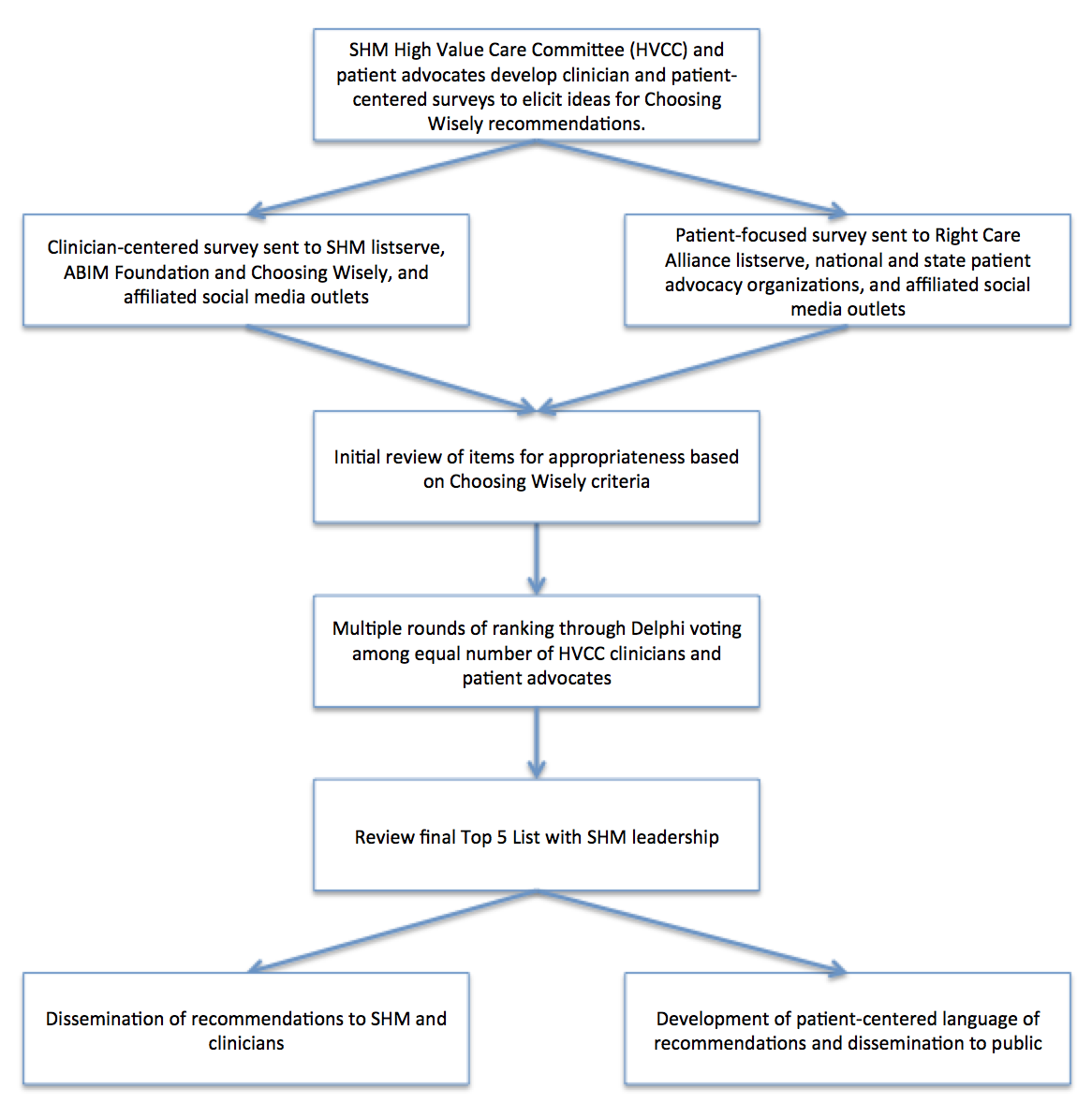Background: The Choosing Wisely campaign aims to engage clinicians and public in addressing overuse in healthcare. Through adoption in 20 countries and 75 organizations, clinician engagement is largely successful. However, patient and public engagement remains a challenge, and there is concern that the impact of Choosing Wisely will be dampened if this is not achieved. In previous published models of Choosing Wisely list development, there is limited patient and public engagement. From the initial crowdsourcing of ideas to the decision process, Choosing Wisely lists have predominantly remained clinician-owned, with messaging tailored for patients after development.
Purpose: We aim to develop a multidisciplinary, multi-institutional, co-creation method of Choosing Wisely list development among clinicians and non-clinicians.
Description: Nine members of the SHM High Value Care Subcommittee convened to develop the 2nd round of Choosing Wisely recommendations on July 2017. Monthly to bi-weekly conference calls among the members were held. A questionnaire requesting examples of unnecessary care in adult hospital medicine was sent from 10/5 – 10/31/17 to the SHM listserve, with additional reach through ABIM Foundation and affiliated social media outlets. Initial results showed 285 respondents with 774 items. Of the respondents, 194 (68%) were hospitalists, 6 (2%) fellows, 16 (6%) residents, 6 (2%) medical students, 6 (2%) physician assistants, 15 (5%) nurse practitioners, 8 (3%) nurses, 14 (5%) patients, 3 (1%) patient advocates, and 17 (6%) others. We received initial feedback that the questionnaire was unclear for some non-clinicians, and subsequently a 2nd patient-friendly questionnaire was created with the help of the patient advocates from the Right Care Alliance Community Engagement Council. Our planned process is outlined in Figure.
Conclusions: Although necessary, co-development of Choosing Wisely recommendations with the public raises questions regarding feasibility. Patient and patient advocate response through our current channels was limited, and identifying key partnerships with patient organizations will be crucial for our next steps. Next, we plan to work with the Right Care Alliance, and patient advocacy groups at national and state level to crowdsource further input from the public. Additionally, co-development is imperative for all steps of this process, including, as we realized, our questionnaire design. In our next steps, we will review all items and evidence, and utilize multiple rounds of Delphi ranking process to pare down the list to Top 5. We will ensure both clinician and non-clinician voice through equal representation in votes. We hope to fully engage patients in crowdsourcing, voting, and dissemination, as a model for other national Choosing Wisely list development processes.

